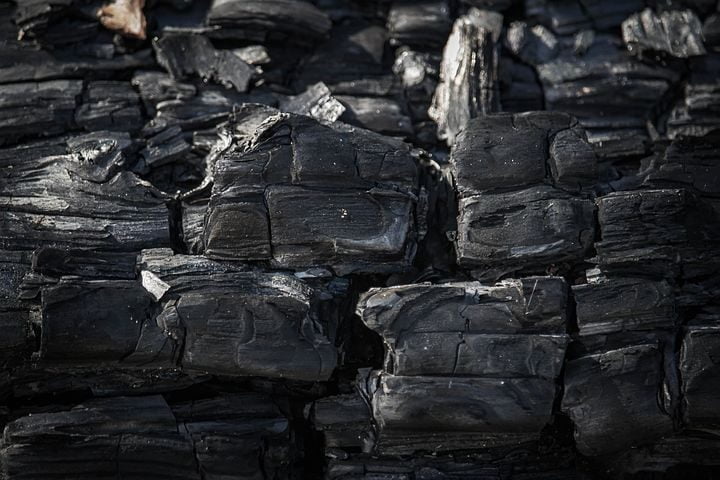In this article we will discuss the charcoal briquettes manufacturing process and the steps involved in making high-quality briquettes.
Charcoal briquettes are a type of fuel that is made from compressed charcoal powder or carbonized wood. They are used as a source of heat and energy for cooking, grilling, and heating purposes. In this article from Charcoal Vietnam, we will discuss the manufacturing process of charcoal briquettes and the steps involved in making high-quality briquettes.
Raw Materials

The main raw materials used in the production of charcoal briquettes are wood, charcoal powder, binders, and additives. The type of wood used for charcoal production is usually hardwoods such as oak, maple, and hickory. Softwoods like pine are not suitable for making charcoal as they produce a lot of tar and creosote when burned, which is harmful to the environment. Charcoal powder is produced from carbonizing the wood in a kiln or pit. Binders and additives are used to hold the briquettes together and improve their burning properties.
Read more: Selecting the right wholesale sisha charcoal supplier
All thing about charcoal briquettes manufacturing process
The manufacturing process of charcoal briquettes involves several steps, which are as follows:
- Raw material collection: The raw materials used for making charcoal briquettes are mostly agricultural waste products like sawdust, rice husks, and bamboo. These materials are collected and stored in a dry place to prevent moisture contamination.
- Carbonization: This is the process where the raw materials are heated to high temperatures in an oxygen-free environment. This process is called pyrolysis, and it converts the organic matter into charcoal. The carbonization process takes place in kilns or retorts, where temperatures reach up to 800°C.

- Crushing: Once the carbonization process is complete, the charcoal is then crushed into small pieces to create a uniform size. The pieces are usually ground into a fine powder using a hammer mill or a grinder.
- Mixing: The crushed charcoal is then mixed with a binder, such as cornstarch, to hold the briquettes together. The mixture is then kneaded to form a dough-like consistency.
- Briquetting: The mixture is then compressed into briquette shapes using a briquetting machine. The machine applies high pressure to the mixture, which compacts it into the desired shape.
- Drying: The freshly formed briquettes are then dried to remove any moisture. This is an important step because it ensures that the briquettes do not break apart when they are burned.
- Sizing: The dried briquettes are then sorted and screened to remove any small pieces that might have been produced during the briquetting process.
- Packing: Finally, the charcoal briquettes are packed into bags or containers for distribution and sale.
This is the basic process for making charcoal briquettes. The process may vary slightly depending on the manufacturer and the type of raw material being used. However, the principles remain the same, and the end product is a clean and efficient fuel source for outdoor cooking and heating.
Quality Control in the charcoal briquettes manufacturing process
Quality Control in the charcoal briquettes manufacturing process involves monitoring and testing various aspects of the production process, such as the raw materials used, the manufacturing process itself, and the final product. This is to ensure that the final product meets the required standards of quality, consistency, and safety.
Key aspects of quality control include continuous monitoring of the production line for efficiency and consistency, testing of raw materials for purity, regular checks on product size, weight, and hardness, and ensuring proper packaging and labeling to ensure product integrity and safety. By following these quality control processes, the manufacturer can ensure that the charcoal briquettes are of the highest quality, meeting the needs of consumers and providing them with a safe, consistent, and high-quality product.
Environmental Considerations in the charcoal briquettes manufacturing process
Charcoal briquette production has an impact on the environment, and manufacturers should take steps to minimize this impact. One of the main environmental concerns is the emissions produced during the carbonization process. The emissions include particulate matter, volatile organic compounds, and greenhouse gases.

Waste management is another important aspect of charcoal production, and manufacturers should implement effective waste management practices to minimize the impact on the environment. Energy efficiency is also a key consideration in charcoal briquette production, and manufacturers should aim to reduce energy consumption and minimize the use of non-renewable energy sources.
Final thought
Charcoal briquettes are an important source of energy for many households and industries. The charcoal briquettes manufacturing process involves several stages, from sourcing the raw materials to testing the final product for quality. Quality control, environmental considerations, and safety measures are important aspects of the manufacturing process. The future of the charcoal briquette industry is bright, and new technologies and innovations will continue to improve the efficiency and sustainability of the production process.
Contact us:
- Email: [email protected]
- Website: Vietnam Charcoal
- Facebook: Vietnam Charcoal
- Instagram : vietnamcharcoal.official
- Whatsapp : (+84) 338 218 168 (Ms. Sarah)
